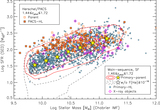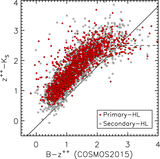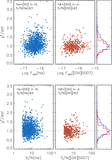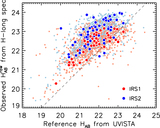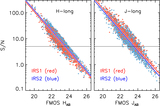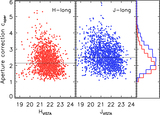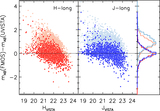Image Details
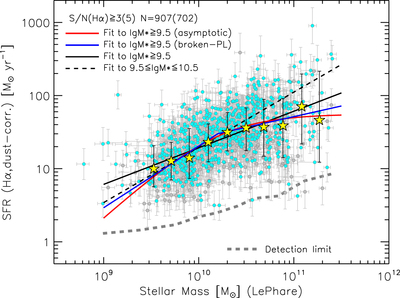
Caption: Figure 31.
Stellar mass vs. SFR from the observed Hα fluxes corrected for dust extinction and aperture loss. Shown are 907 objects with a detection of Hα (≥3σ) in the FMOS H-long, separated by their S/N (gray circles, ﹩3.0\leqslant {\rm{S}}/{\rm{N}}\lt 5.0;﹩ cyan circles, S/N ≥ 5.0 (N = 702); X-ray objects are excluded). Yellow stars indicate the median Hα-based SFRs in M* bins from 109.4 to ﹩{10}^{11.4}\,{M}_{\odot }﹩ with a constant interval of 0.2 dex, with the central 68th percentiles indicated by the vertical error bars. Black solid and dashed lines indicate a linear regression of our data limited to ﹩{M}_{* }\geqslant {10}^{9.5}\,{M}_{\odot }﹩ and ﹩{\rm{t}}{10}^{9.5}\leqslant {M}_{* }/{M}_{\odot }\leqslant {10}^{10.5}﹩, respectively. Blue and red solid lines indicate the best fits with a broken power law (Equation (12)) and an asymptotic function (Equation (13)). A thick gray dashed line indicates the typical detection limit, accounting for the dust extinction and aperture correction.
Copyright and Terms & Conditions
© 2019. The American Astronomical Society. All rights reserved.



